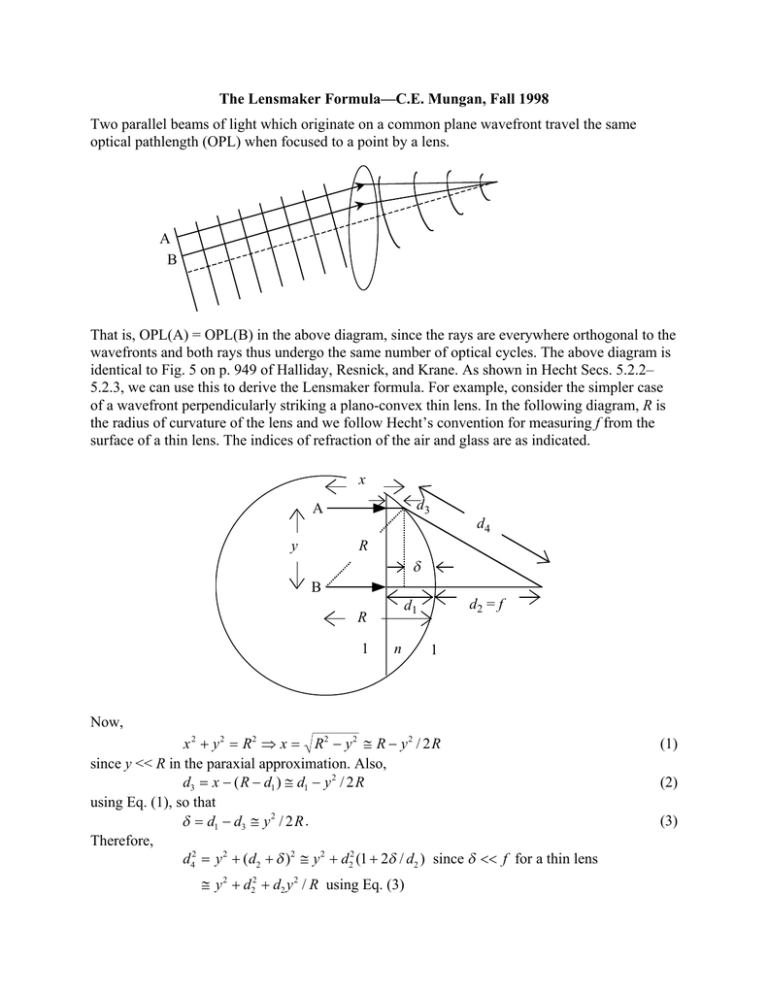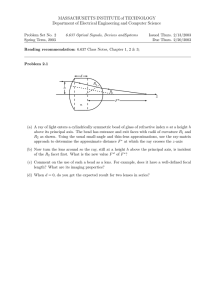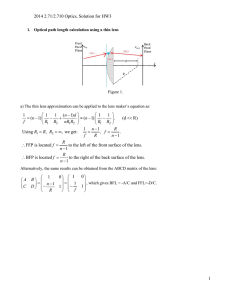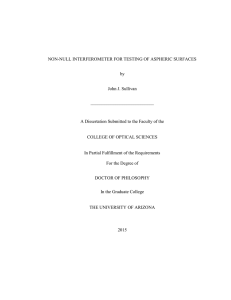The Lensmaker Formula—C.E. Mungan, Fall 1998
advertisement

The Lensmaker Formula—C.E. Mungan, Fall 1998 Two parallel beams of light which originate on a common plane wavefront travel the same optical pathlength (OPL) when focused to a point by a lens. A B That is, OPL(A) = OPL(B) in the above diagram, since the rays are everywhere orthogonal to the wavefronts and both rays thus undergo the same number of optical cycles. The above diagram is identical to Fig. 5 on p. 949 of Halliday, Resnick, and Krane. As shown in Hecht Secs. 5.2.2– 5.2.3, we can use this to derive the Lensmaker formula. For example, consider the simpler case of a wavefront perpendicularly striking a plano-convex thin lens. In the following diagram, R is the radius of curvature of the lens and we follow Hecht’s convention for measuring f from the surface of a thin lens. The indices of refraction of the air and glass are as indicated. x d3 A d4 y R δ B 1 d2 = f d1 R n 1 Now, x 2 + y 2 = R2 ⇒ x = R2 − y 2 ≅ R − y 2 / 2 R since y << R in the paraxial approximation. Also, d3 = x − ( R − d1 ) ≅ d1 − y 2 / 2 R using Eq. (1), so that δ = d1 − d3 ≅ y 2 / 2 R . Therefore, d42 = y 2 + ( d2 + δ )2 ≅ y 2 + d22 (1 + 2δ / d2 ) since δ << f for a thin lens ≅ y 2 + d22 + d2 y 2 / R using Eq. (3) (1) (2) (3) y2 d (4) ⇒ d4 ≅ d2 1 + 2 1 + 2 R 2 d2 using the paraxial approximation once more. Combining Eqs. (2) and (4), we have y2 nd3 + d4 ≅ nd1 + d2 + ( R + d2 − nd2 ) . 2 d2 R But equality of the optical pathlengths for rays A and B implies that nd3 + d4 = nd1 + d2 . Thus the quantity in parentheses must be zero; substitute d2 = f into it and rearrange to obtain 1 1 = (n − 1) f R which is the Lensmaker formula for a plano-convex lens. You can now glue two such lenses together to get a biconvex lens.










